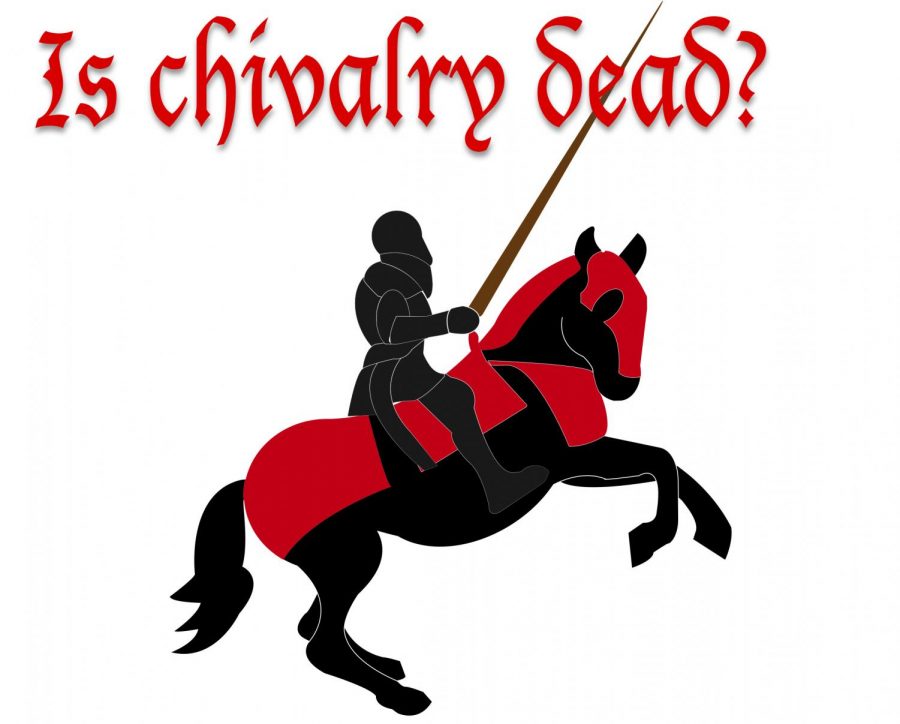Students discuss the evolution of chivalry
January 22, 2015
American pop singer Nelly Furtado once sang, “Chivalry is dead but you’re still kind of cute,” in her hit “Promiscuous.” Although the song was released in 2006, the question of chivalry’s death still looms over millennial heads.
Chivalry is the knightly system of religious, moral and social code, according to the Oxford English Dictionary.
For some students, chivalry has evolved greatly.
“I think chivalry is something more than just men and women,” said senior Andrew Kelly. “I think chivalry is opening doors for same sex, opposite sex, old and young.”
Chivalry has changed, but is not dead, he said.
“It comes out of a medieval martial tradition of war and soldiers,” said Cheryl Price, assistant professor of English. “It started with knights, royalty, people of the aristocracy and the fighters of the aristocracy.”
As a code of conduct, chivalry is built on three things: how a person serves their lord or king, their religion and women or those too weak to protect themselves, she said.
Chivalry was practiced throughout much of Europe. A knight would serve his lady, fight for her honor and go on quests in her name, Price said.
“If you’re going to venerate a woman, you do have to put her up on a pedestal so she’s also forced to obey a certain moral code and code of conduct just like the knight is,” she said.
The practice of chivalry was restrictive, Price said. Both men and women were expected to live up to this ideal.
“I think when we talk about chivalry nowadays, that’s more coming out of the tradition of the gentleman from the 19th Century,” she said.
Senior Deondrick Orr said chivalry is being taught as a way to start a relationship instead of the way a gentleman
should act.
“I think it’s camouflaged as being ‘extra’ or being ‘thirsty’,” Orr said. “When you’re doing something for a woman she’s always wondering what you’re trying to gain. You tell a young lady that she’s beautiful because she is, and you go on about your day.”
The earliest we see the word used to describe what we consider chivalry today is in the 19th century, Price said.
“In the 19th century there was a lot of overlap between how men were supposed to treat women,” she said. “Women were really idolized and they were supposed to be the angel of the home. That’s pretty similar to that idea of courtly love.”
Junior Allison Lawrence said the cultural differences of previous generations and this one is a factor in the way society views chivalry.
“I think our culture and this generation are the reason we don’t see that anymore because we didn’t grow up in that,” she said. “I see a lot more of hanging out, using apps or using the Internet more than just organically trying to date someone or courting someone.”
Wanting to protect the weak, often women, was part of the original code of chivalry. And it lasted through many centuries, Price said. A change in the chivalric code occurred in the 20th century during the shift of how women were viewed.
“It’s definitely tied to women wanting equality,” she said. “I think that has caused the shift in men not following this code of conduct towards women. We have new codes of conduct.”
Junior Rabun Wright said she thinks chivalry is not held at the same standard anymore.
“I don’t think it’s a priority anymore for people in relationships,” she said.
With changing relationships between the sexes chivalry has taken on a new form, Price said.
“I don’t think the act of being courteous, helping people or fighting for the weak has died out at all,” she said. “I think now women and men can both do it.”












